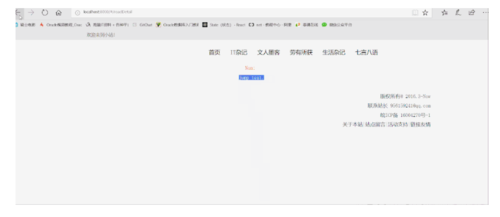首先创建readDetail.vue 且在index.js中注册路由。
传递页面方式:
1.通过router-link进行跳转
<router-link
:to="{
path: 'yourPath',
params: {
key: 'value', // orderNum : this.searchData.orderNo
},
query: {
key: 'value', // orderNum : this.searchData.orderNo
}
}">
<button type="button">跳转</button> </router-link>
1. path -> 是要跳转的路由路径,也可以是路由文件里面配置的 name 值,两者都可以进行路由导航
2. params -> 是要传送的参数,参数可以直接key:value形式传递
3. query -> 是通过 url 来传递参数的同样是key:value形式传递2. $router方式跳转
this.$router.push({name:'路由命名',params:{参数名:参数值,参数名:参数值}})
this.$router.push({
path: 'yourPath',
name: '要跳转的路径的 name,在 router 文件夹下的 index.js 文件内找',
params: {
key: 'key',
msgKey: this.msg
}
/*query: {
key: 'key',
msgKey: this.msg
}*/
})接受方式
this.$route.params.参数名
this.$route.query.参数名
实验(包含两种方式):
传递页:
<router-link :to="{ name: 'readDetail', params: { msgKeyOne: 'jump test.' }}">
<button type="button">跳转</button>
</router-link><button @click="sendParams">传递</button>-----------------------------------------------------------------------------------------
export default {
name: 'reads',
data () {
return {
msg: 'msg test.'
}
},接收页:
<div class="container">
<p style="color:red;">Num:{{ myIndex }}</p>
<p>{{ msg }}</p>
</div>-----------------------------------------------------------
data () {
return {
msg: '',
// 保存传递过来的index
myIndex: ''
}
-----------------------------------------------------------
mounted: function () {
this.msg = this.$route.params.msgKeyOne
this.myIndex = this.$route.params.msgKey
console.log(this.myIndex)
}实验结果:
作者:张中华
链接:https://www.jianshu.com/p/c699c4d197de
点击查看更多内容
1人点赞
评论
共同学习,写下你的评论
评论加载中...
作者其他优质文章
正在加载中
感谢您的支持,我会继续努力的~
扫码打赏,你说多少就多少
赞赏金额会直接到老师账户
支付方式
打开微信扫一扫,即可进行扫码打赏哦






